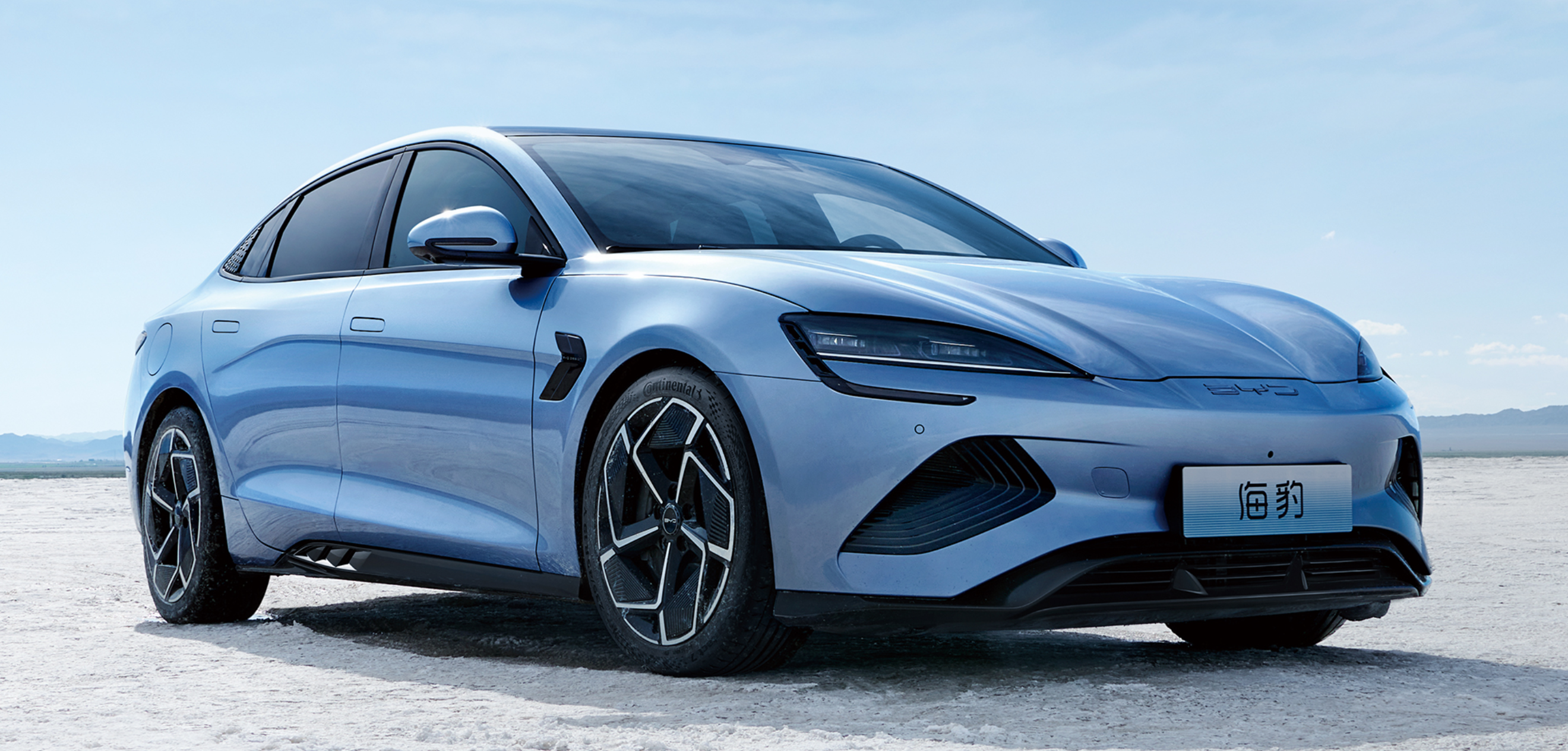BYD Sea Lion announced the official prices for four versions of the car at its launch event this afternoon, and all four models are 3,000 yuan cheaper than the original pre-sale price. In response to the needs and improvement suggestions raised by users during the pre-sale period, BYD has made manual sun visors standard for all models and equipped the 650 km four-wheel drive performance version and above with the iTAC intelligent torque system as a gift.
Overall, this price is in line with expectations. Although the official did not make a significant discount adjustment this time, the product power of the sea lion is visible to the naked eye, and its performance in several aspects compared to Model 3 is also commendable. The price range from 209,800 yuan to 286,800 yuan is still very competitive objectively.
But what is interesting is that it is not just the BYD Sea Lion that competes with Model 3, but also the Changan Blue Core SL03, which announced its price a few days ago. At the beginning of the sea lion launch event today, Changan Blue Core, as a friendly competitor, posted a congratulations Weibo to the sea lion, even with the hashtag #Sea Lion Launch Event#, and BYD replied politely to this Weibo: “The Sea Lion” model is here, thank you, my “Blue” friend.
The atmosphere between the two companies was very harmonious during the exchange, but the gunpowder smell in the competition for the mid-range new energy vehicles market for independent brands has become stronger.
Here is a summary of the information released at the Sea Lion launch event:
The first half of the Sea Lion launch event was a design interpretation, and the official introduced the theme and inspiration of the Sea Lion design in this part.
The Sea Lion model has been on the market for some time, and we have also introduced its design in previous articles. To put it briefly, the Sea Lion design has obvious “sport” and “electric” orientation. The front of the new car has a strong diving feeling, the height of the whole vehicle is low, and it has a front and rear overhang that is relatively short compared to the body, and a long wheelbase of 2,920 mm. These features are very similar to the Tesla Model 3.The interior of the Sea Lion model features a set of design language emphasizing the “ocean” theme. The design of the air conditioning vents and steering wheel can evoke people’s association with marine life. The color pairing also uses pale cold colors with black, which is a rare elegant and fresh style in the BYD product line.
At the press conference, the Sea Lion high-performance four-wheel drive kit version model also made an appearance. Compared with the appearance of the regular version, the kit version adds new front lip, air intake, hub, diffuser, rear wing, and body decals, and the interior will also be replaced with the same theme of matching.
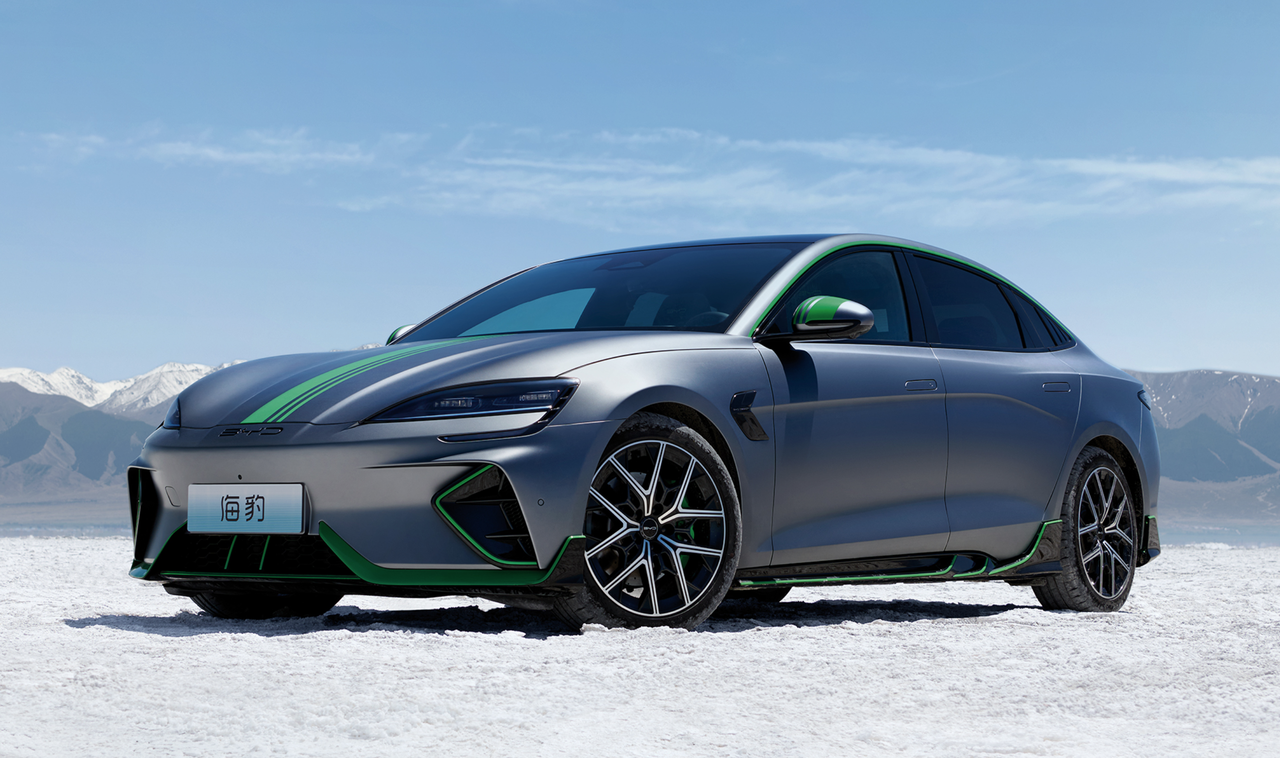
The corresponding content of the kit version had been exposed earlier by the Ministry of Industry and Information Technology, but only green and orange are available on the Mini Program launched this time, and the blue kit is not offered. The price for the kit option is 20,000 yuan.
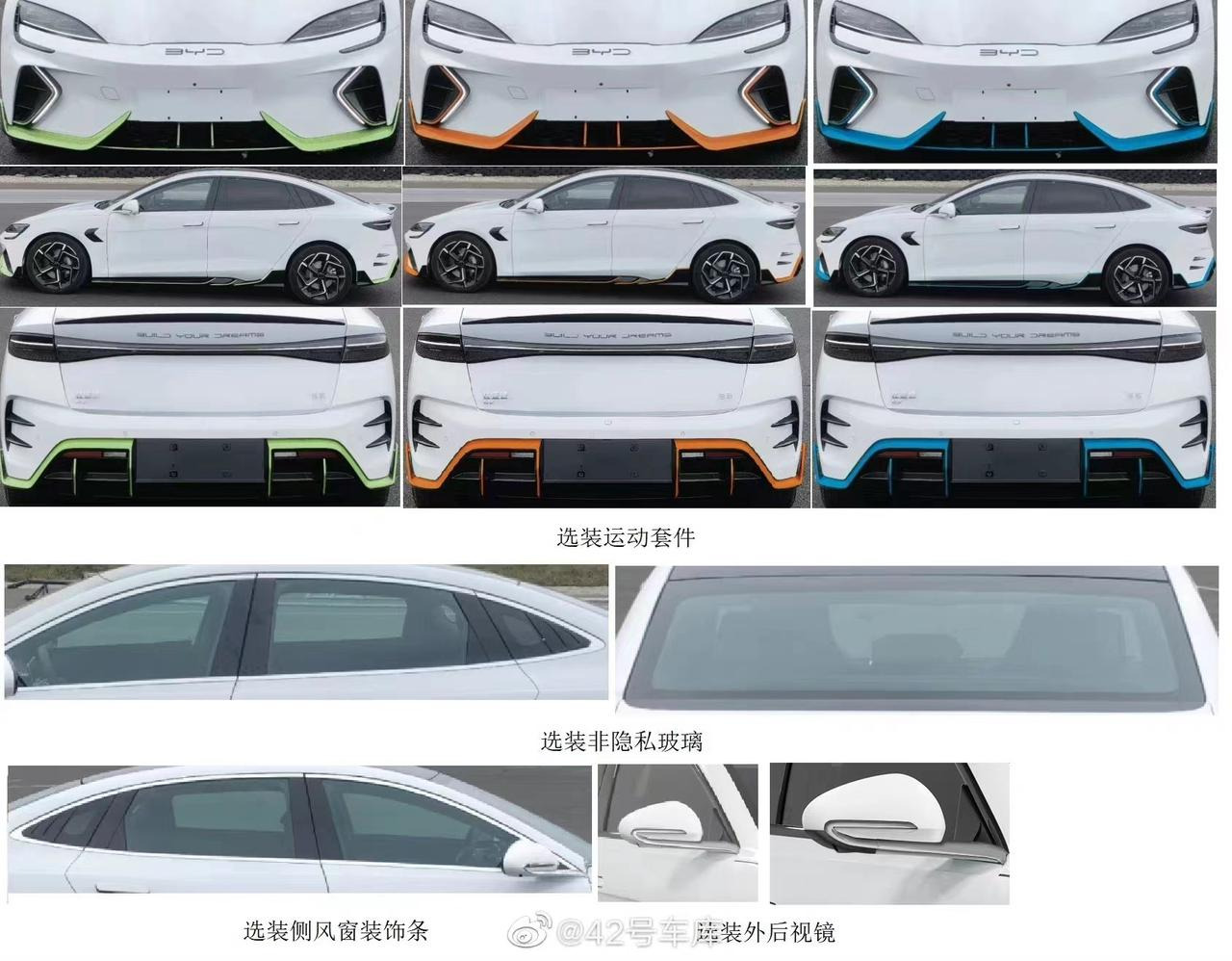
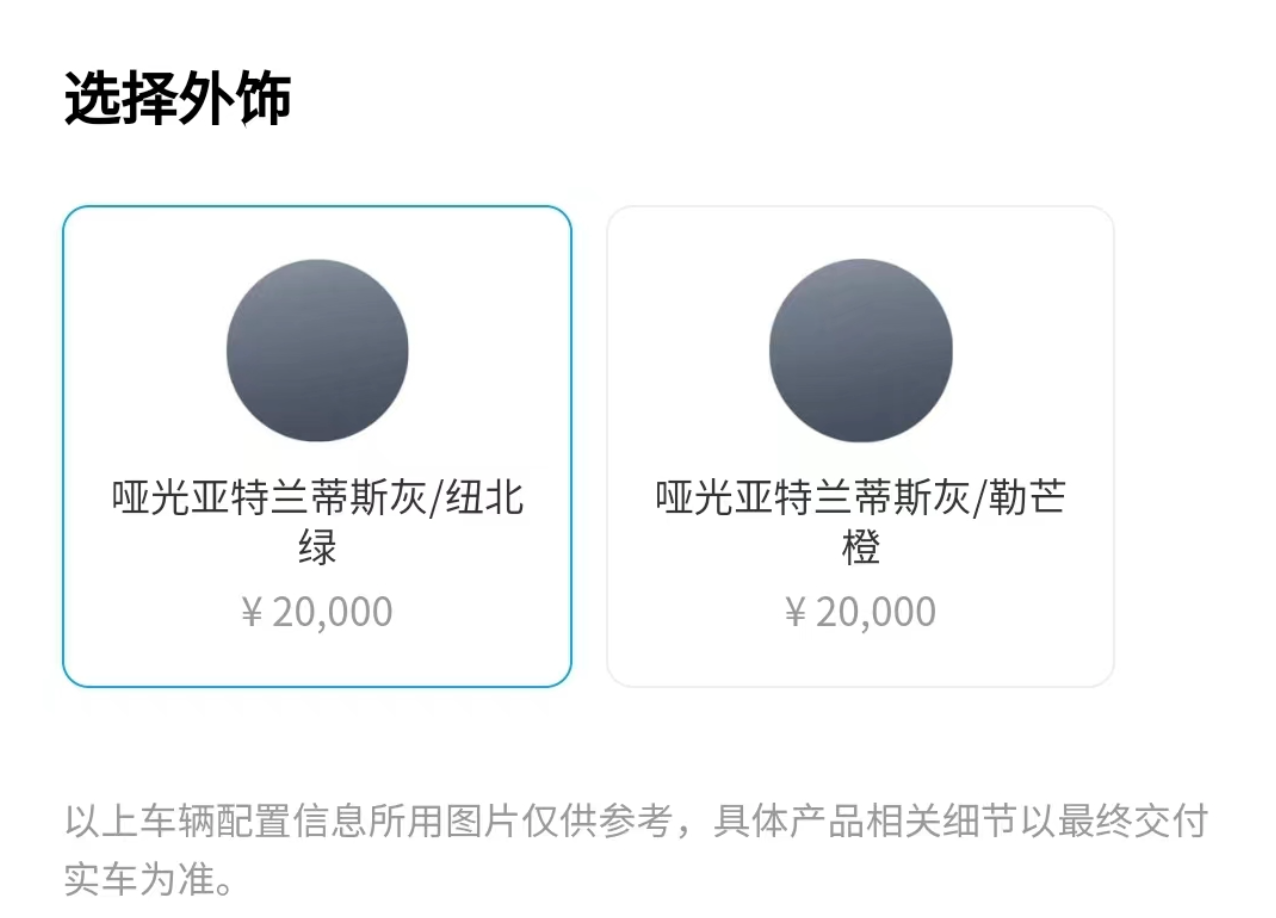
Designing a set of dedicated appearance kit for high-performance models is a good starting point and a feasible commercial model that traditional performance car brands have already practiced. However, it has to be admitted that the effect of the Sea Lion’s appearance kit made by BYD is not ideal. The design language of the kit and the original design of the entire vehicle are not unified. The exterior of the vehicle after installing the kit has a clear “aftermarket” feeling compared to the original appearance, and the styling and color matching do not feel coordinated enough. For consumers considering buying the four-wheel drive high-performance version, I believe that buying the original version without the kit would be a better choice.
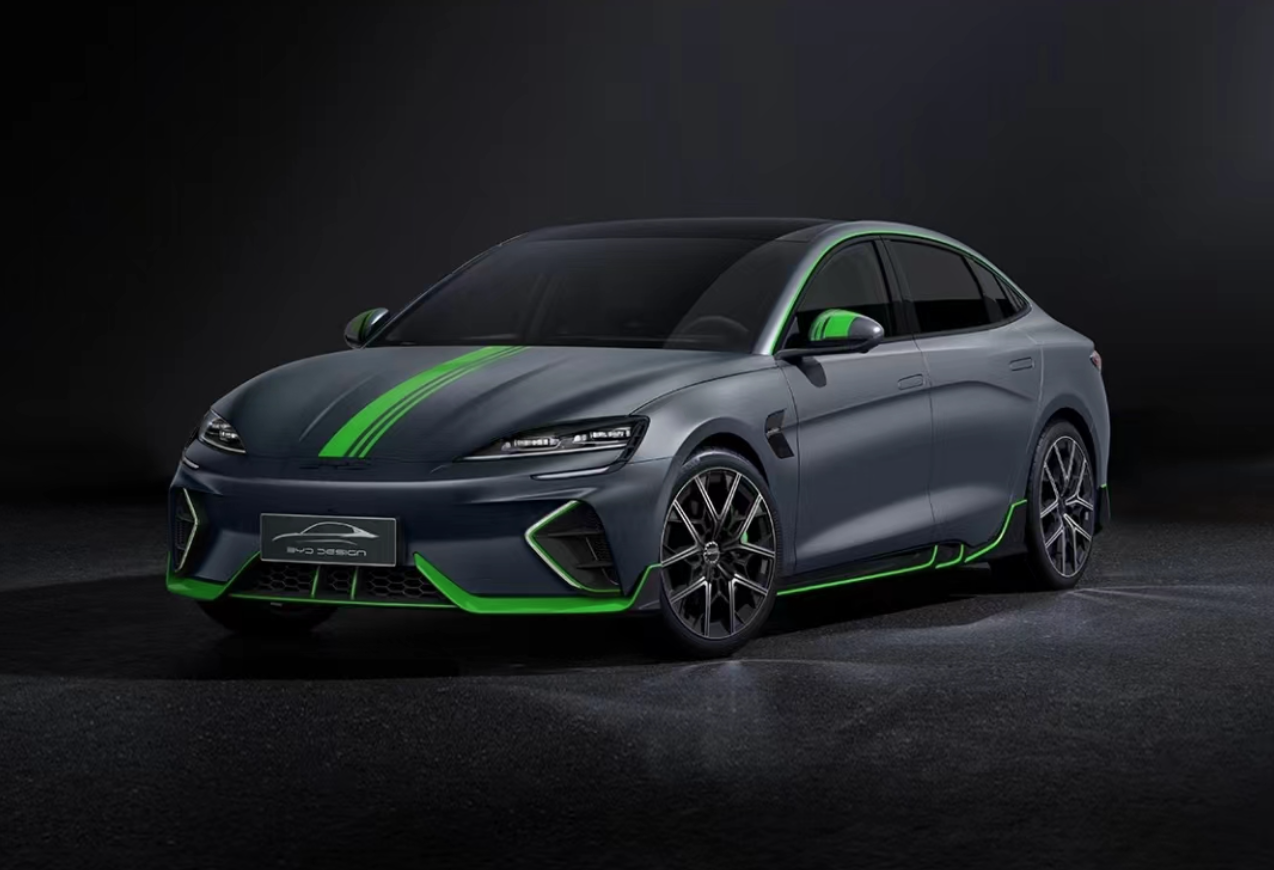
At first glance, the 19-inch sports rims in the kit seem somewhat familiar. After recalling, I remembered that the FF10 in HER’s rotary forging product line is also designed with two sets of five spokes that are nested inside and outside each other. However, the Sea Lion has a highlight treatment for its outer double five spokes, and the inside of the rim has a low-drag, closed-edge design that not only highlights the sporty appearance but also addresses some of the energy consumption needs of electric vehicles. Compared with the appearance kit, this set of rims may be one of the few plus points.
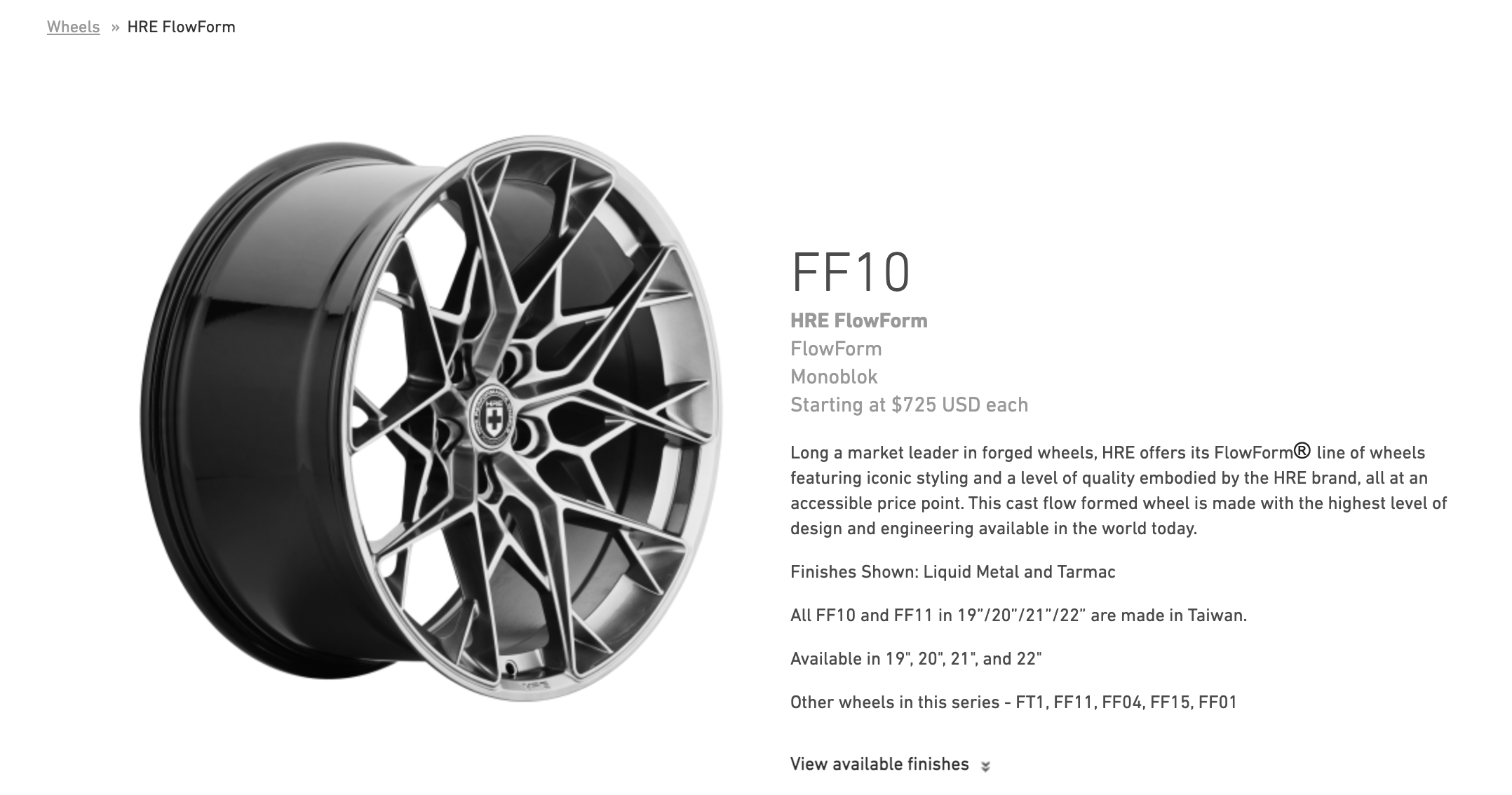
In addition to the design, the information-rich parts of the Sea Lion launch event also include:
-
Introduction of the three-electric system
-
Introduction of the vehicle’s software
-
Release of the listing price and benefits.We will summarize in this order below.
Three-electricity system: the core selling point of the Dolphin
BYD’s three-electricity system technology has become deeply embedded in the public consciousness in China over the past two years, and the Dolphin is the most advanced model in the BYD passenger car product line. As a product benchmarking the Model 3, the Dolphin has a powertrain configuration of rear-wheel drive + four-wheel drive under its native pure electric architecture. The motor configuration is the same as the layout of front asynchronous + rear permanent magnet, among which:
- The maximum power of the front asynchronous motor is 160 kW;
- The two rear permanent magnet motors are respectively 150 kW and 230 kW;
- The maximum speed of the 230 kW rear motor is 16,000 rpm.
Under the dazzling parameters, the motors aboard the Dolphin adopt a hairpin flat wire winding form, and the high-slot filling rate design is conducive to improving the power density of the motors. Moreover, the 230 kW power makes the Dolphin’s motor the third-largest permanent magnet motor in terms of power in domestic brands, surpassed only by Huawei’s DriveONE series 250 kW motor and SAIC’s 250 kW motor. However, these two motors from Huawei and SAIC are used in models positioned at the higher end of the market. The four-wheel drive version of the Dolphin still has outstanding motor performance in terms of its price range.
Next is the battery. The Dolphin has two versions of energy capacity: the Shanghai Dolphin Standard Endurance version has a battery capacity of 61.44 kWh, and the Long Endurance version has 82.56 kWh. It is worth noting that the Dolphin only uses lithium iron phosphate cells, which, at this body size, are capable of surpassing three-element lithium cells in terms of dropping more than 82 degrees of electricity and exhibiting the outstanding cell density capabilities of BYD.
In addition to the blade battery that BYD takes pride in, there is also BYD’s latest CTB technology, which makes the battery pack a chassis structural component, further improving the integration of the electric vehicle chassis. The derived advantages include higher body anti-torsion stiffness, as BYD stated at the press conference that the Dolphin’s anti-torsion stiffness reached 40,500 N·m/deg.
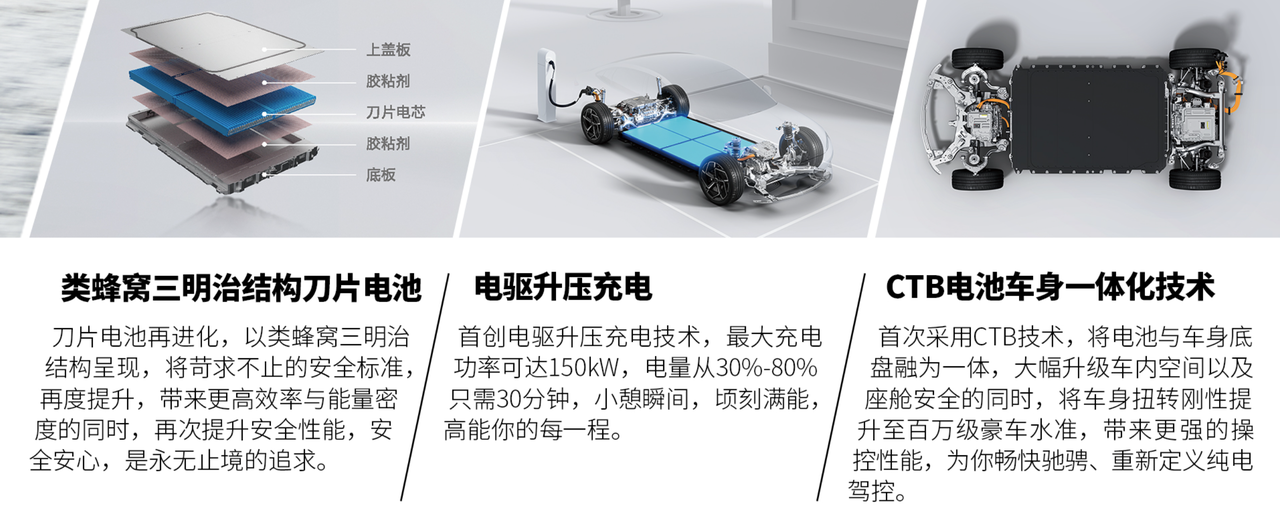
It is worth mentioning that high stiffness theoretically brings better ride comfort and dynamic response, but the final outcome will still involve many other factors, and the actual effects still need case-specific analysis. For example, the body stiffness data of the Model 3 is not outstanding, but the actual driving dynamics performance is among the best in the same segment of pure electric models.
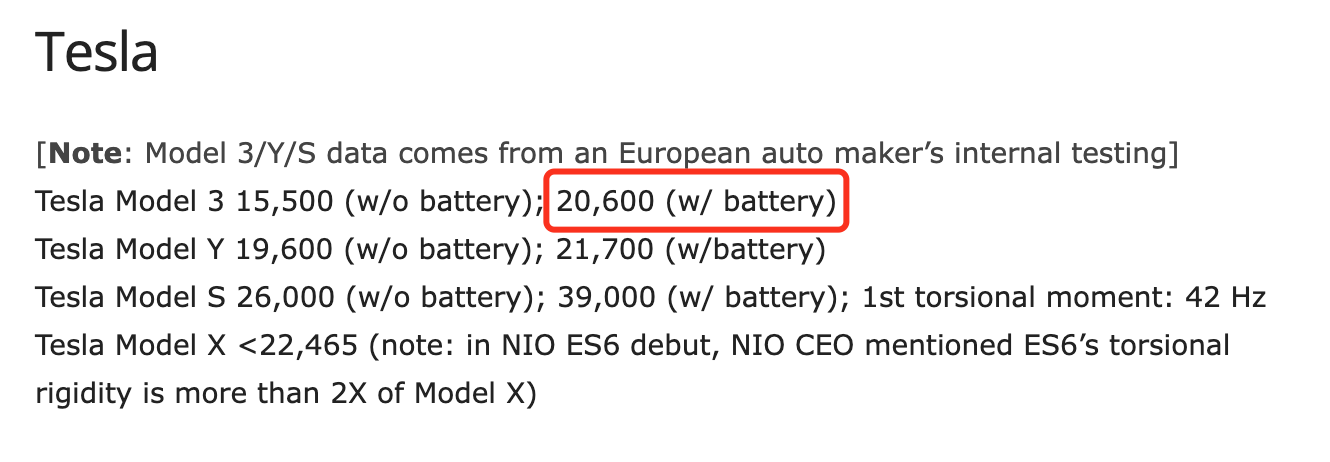 The fact is, consumers’ concerns about electric cars ultimately still fall on range, particularly the battery and motor, and BYD’s CLTC range parameters this time around are impressive:
The fact is, consumers’ concerns about electric cars ultimately still fall on range, particularly the battery and motor, and BYD’s CLTC range parameters this time around are impressive:
- Standard range version: 550 km;
- Long range rear-wheel drive version: 700 km;
- Four-wheel drive high-performance version: 650 km.
Looking merely at its parameters, it is no different from the benchmark Tesla Model 3. Nonetheless, as stated before, BYD’s large battery version employs lithium iron phosphate battery which has inherent disadvantages in lightweight design. To achieve similar range under such circumstances, BYD not only developed an efficient electric drive system and a low drag coefficient of 0.219 for the Han EV, but also adopted a wide-temperature-range heat pump and a slightly larger power battery. As for maximum charging power, the small battery version of Han EV has a charging rate of 110 kW, while the large battery version has been upgraded to 150 kW as compared to previous BYD models.
All in all, the three-electric-performance of the Han EV is its biggest selling point.
Software: BYD still has room for improvement
During the launch conference, BYD did not mention much about the Han EV’s advanced driver-assistance systems (ADAS) and there was also little official promotion of it. The official configuration table on its website shows that Han EV only has the most basic L2 ADAS function. Even compared with traditional vehicle companies in today’s market, ADAS is BYD’s absolute shortcoming.
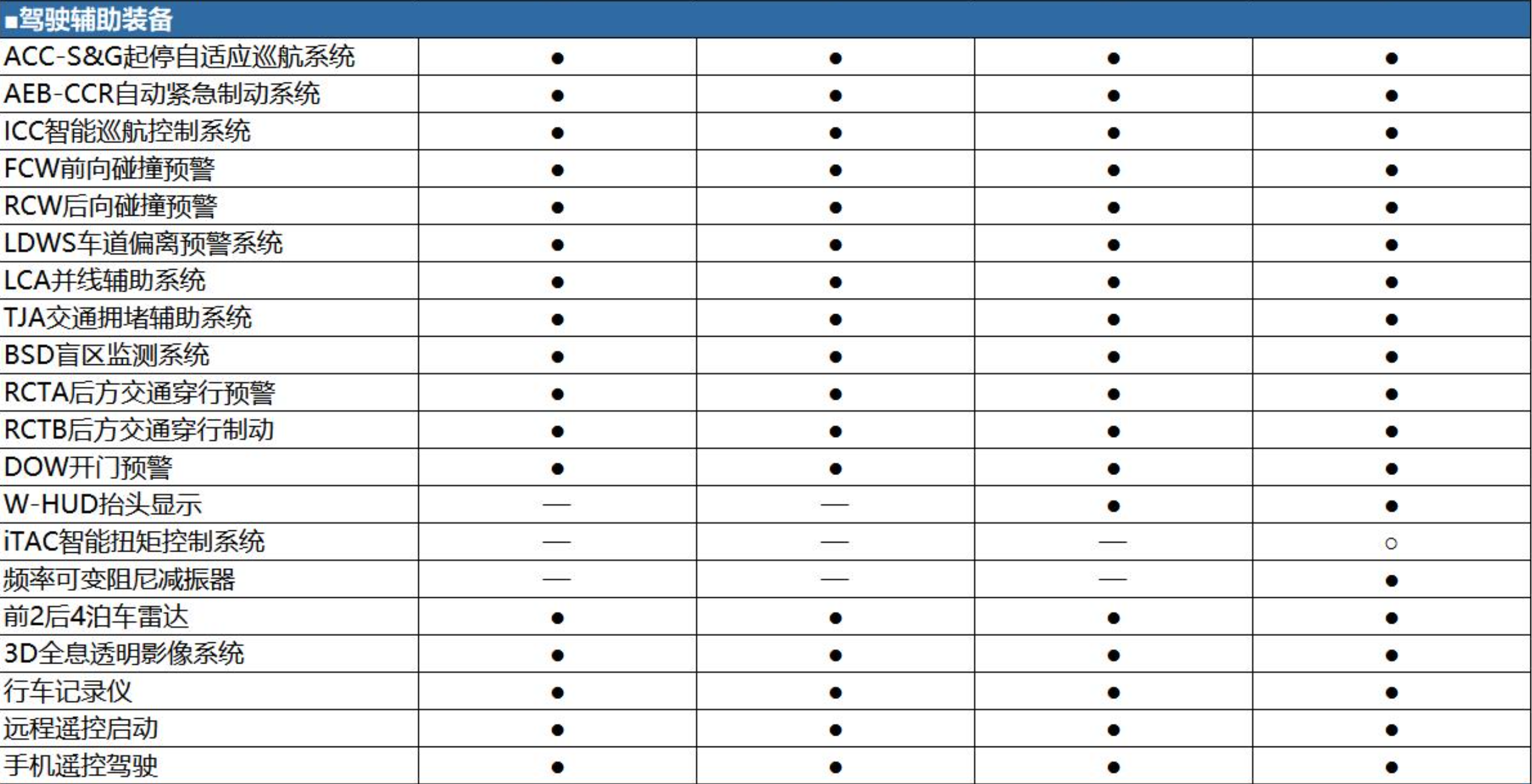
The launch conference mainly focused on the in-car systems of the Han EV, and BYD emphasized the UI theme and exclusive sound effects specially developed for the Han EV. The displayed images do show that it is indeed different from previous BYD in-car themes, but judging from the HMI layout, the Han EV still uses DiLink by BYD and the rotating screen remains unchanged.
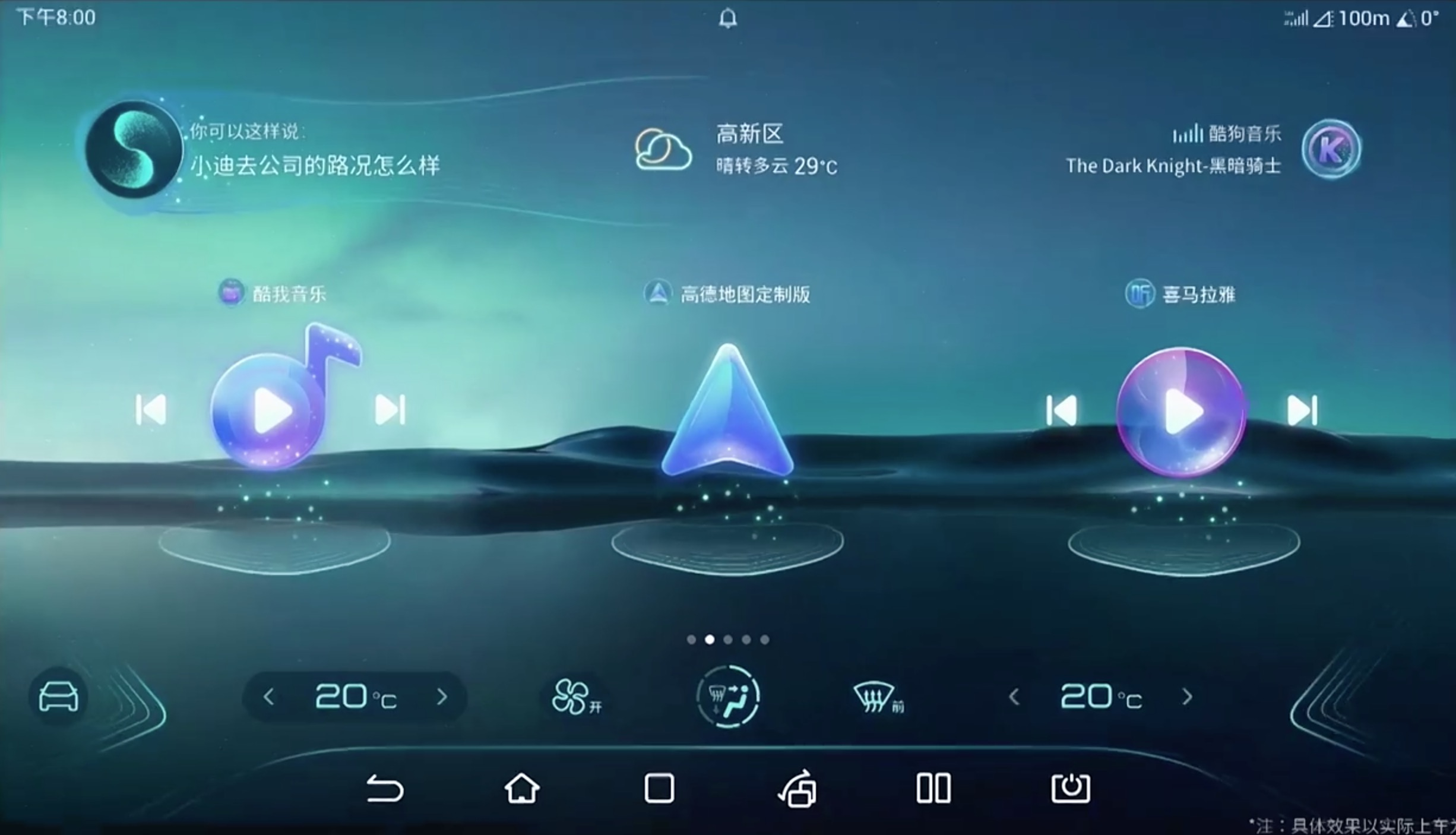
Comments from Weibo show that the public is not satisfied with the system aesthetics, with most criticizing the UI as outdated, and some even suggesting BYD should hire professionals from mobile companies to optimize the system design.
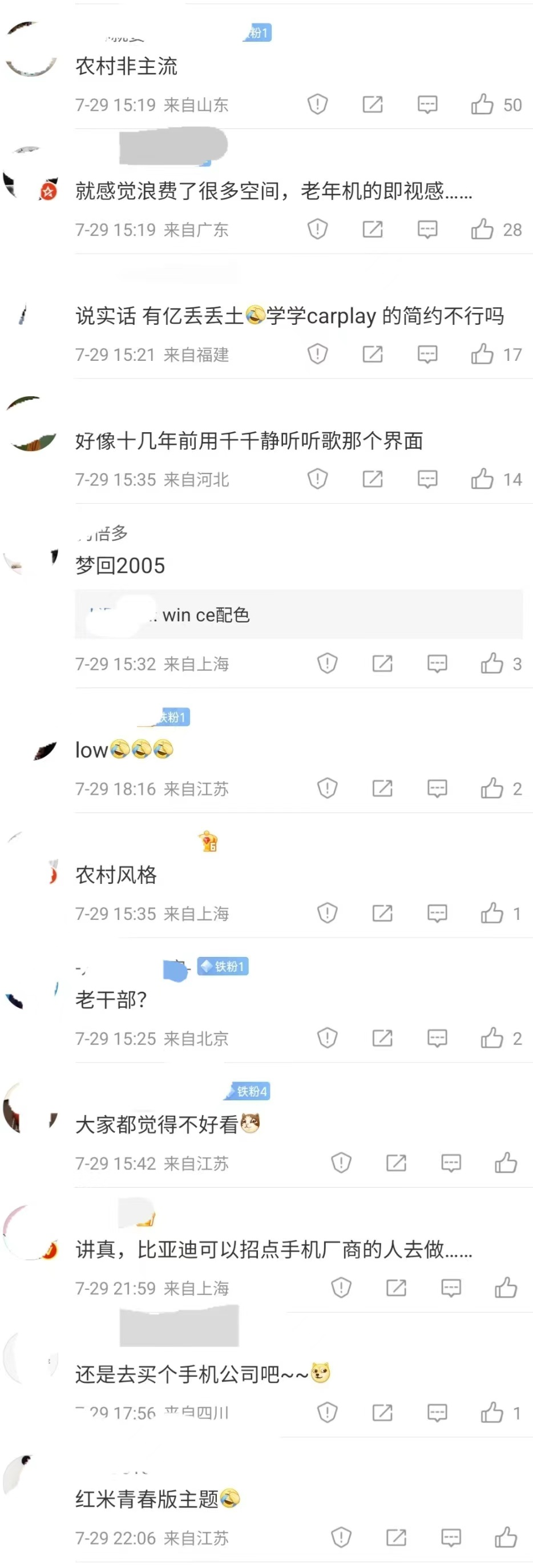 The official introduction of the car hardware part has not been made. According to the information provided by the user “I am Hou Weidong” on Dongchedi, the Hippocampus car is equipped with a Snapdragon 690 chip with 8 GB of memory and 128 GB of storage. Snapdragon 690 is a mobile chip released by Qualcomm in 2020, and its performance belongs to the middle-end product line of Snapdragon, and its actual fluency remains to be verified.
The official introduction of the car hardware part has not been made. According to the information provided by the user “I am Hou Weidong” on Dongchedi, the Hippocampus car is equipped with a Snapdragon 690 chip with 8 GB of memory and 128 GB of storage. Snapdragon 690 is a mobile chip released by Qualcomm in 2020, and its performance belongs to the middle-end product line of Snapdragon, and its actual fluency remains to be verified.
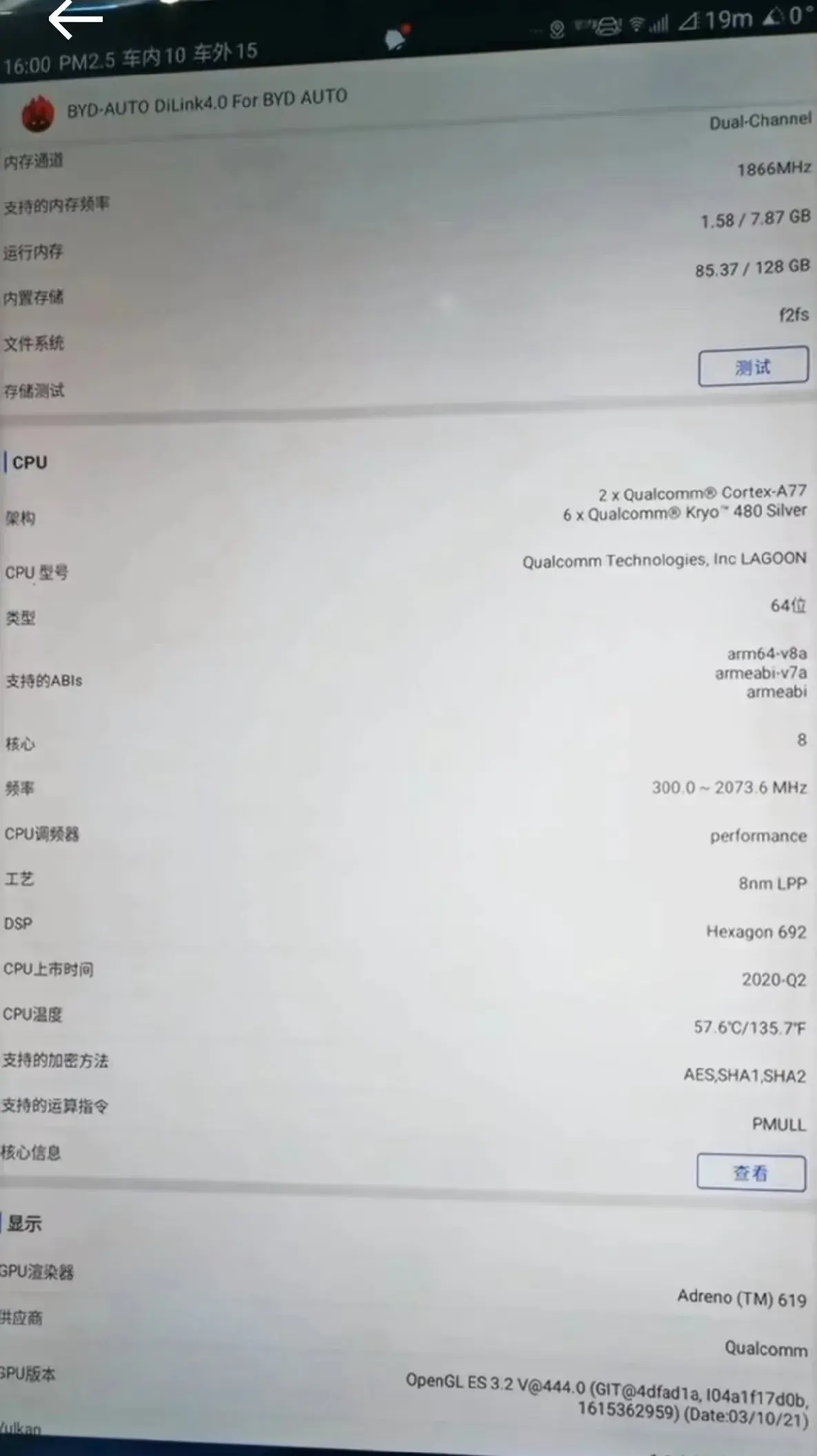
A relatively good feature of the Hippocampus car is that all models support 5G networks. Since the DiLink application ecology itself is good, the video playback experience on the car will be further improved with the support of 5G.
Outside of the car, BYD’s specialties such as the transparent chassis and remote parking functions have arrived on the Hippocampus as expected. At the press conference, the official also announced that a dedicated group of widgets has been developed for the car’s mobile app, which allows users to directly and quickly control some vehicle settings on their phones. However, these features are no longer novel for BYD users.
It can be said that BYD still falls short in terms of intelligence on the Hippocampus, and advanced driving assistance and intelligent cockpit are still the shortcoming of BYD’s current product level. For the Hippocampus car, these two points are also the entry points for differentiated competitive advantage for some rival products.
Price and Benefits: Reasonable without Surprises
The price of the Hippocampus four models are:
-
Standard Range Rear-Wheel Drive Elite 209,800 yuan;
-
Standard Range Rear-Wheel Drive Premium 222,800 yuan;
-
Long Range Rear-Wheel Drive version 259,800 yuan;
-
Four-Wheel Drive Performance version 286,800 yuan.
If carefully compared, the price distribution of the Hippocampus is clearly targeted: the Four-Wheel Drive Performance version of 286,800 yuan and the Long Range Rear-Wheel Drive version of 259,800 yuan are just high and low, respectively, in the range of the Tesla Model 3 Rear-Wheel Drive version, which provides a larger battery configuration for roughly the same price, which is very attractive to cost-conscious users.
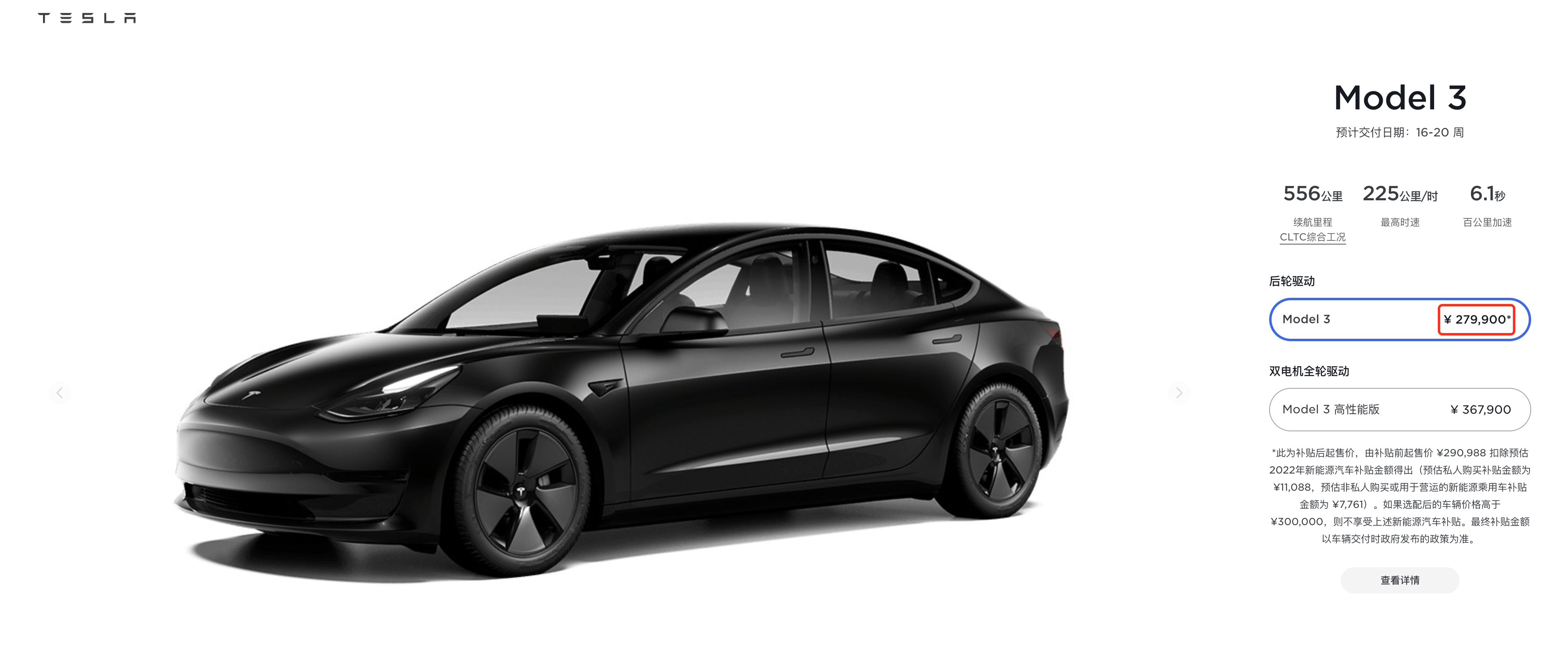 Based on the store statistics provided by our old friend Sun Shaojun, about 40% of the potential customers of Hippo would choose to buy Teslas. It seems that the pricing of the two products in the upper half of Hippo’s car models is very successful.
Based on the store statistics provided by our old friend Sun Shaojun, about 40% of the potential customers of Hippo would choose to buy Teslas. It seems that the pricing of the two products in the upper half of Hippo’s car models is very successful.
In terms of the configuration ratio of Hippo’s orders, about 40% of the users chose the standard range rear-wheel drive deluxe model with a price of 222,800 yuan, while only about 10% of the users chose the standard range rear-wheel drive elite model. At first glance, it seems that the situation of BYD’s low-end models being warmly received as a laughingstock has happened again. But from the perspective of consumers, the extra seat ventilation and Dynaudio sound system in the deluxe model do bring value for money. In addition, the sales targets of the two models in the lower half are relatively accurate.
BYD provides a subsidy of 4,000 yuan for replacement, free home charging pile, 2-year traffic for car devices, and the more attractive lifetime warranty for the first owner in non-operational field, although there are mileage restrictions for each year in the terms, the sense of security given to consumers is more important than the benefits.
In Sun Shaojun’s store statistics, one piece of information worthy of attention is that after the launch of the Hippo, stores did not generally have new orders. Apart from the internal factors of BYD, the external factor that cannot be ignored is the Deep Blue SL03.
SL03 stands out halfway
As mentioned at the beginning, the Hippo targets Model 3, and the Deep Blue SL03 also targets Model 3. Therefore, under the same reference object for both of them, these two cars have naturally become competitors.
BYD’s layout of new energy products is earlier than that of domestic independent brands, and its advantages in industrial scale and market awareness are beyond doubt, so usually BYD’s new energy models will have a very obvious cost-effective tag.
The early Han EV to Model 3 was like this, Qin PLUS DM-i to the joint venture A-level fuel vehicle was like this, Song PLUS DM-i to the joint venture compact SUV was like this, Dolphin to ID.3 was like this, and now the Hippo to Model 3 is still like this.
But BYD may not have expected that the Deep Blue SL03, released a few days ago, played the “returning like for like” game.
As the Godfather said, Deep Blue SL03, as a medium-sized new energy sedan, gave consumers an “offer they can’t refuse”:
- Extended-range version for CNY 168,900
- Pure electric 515 km version for CNY 183,900
- Pure electric 705 km version for CNY 215,900
That is to say, based on endurance, the small battery version of Deep Blue SL03 is CNY 38,900 cheaper than the competitor car models of Hippo, and the large battery version is CNY 43,900 cheaper.
Some people may ask, isn’t the entry-level model of the Hippo CNY 209,800? Did the price difference of the small battery version get confused?But it is worth noting that the Deep Blue SL03’s differentiation and misaligned competition strategy are more user-oriented. For example, the pure electric model comes standard with a 15-speaker Sony sound system with headrest speakers, and the Deep Blue SL03 comes standard with an 8155 chip in the car system that users care about. In addition, the pure electric 515 model uses a larger 190 kW motor than the Seagull, providing better power performance.
In summary, the two models have different configurations, but the additional configurations of the Deep Blue SL03 are what consumers want, and the price difference of several tens of thousands of yuan cannot be ignored.
This time, BYD was rare in losing the price war to its competitors, which will undoubtedly divert some of the sales of the Seagull, but objectively speaking, given BYD’s influence among consumers, the Seagull will still be a hot-selling model.
Finally, the appearance of the Deep Blue SL03 is of great significance to BYD. This car not only competes with benchmark rivals, but also serves as a significant warning signal: BYD’s current vertically integrated industrial chain has helped DM-i defeat plug-in hybrids from joint ventures and domestic brands in terms of price, occupying the market. However, now the first successful challenge case has emerged in the market.
My purpose in mentioning this matter is not to encourage BYD to continue to lower prices and enter into a vicious price war with its competitors, but to hope that BYD will realize that the era of three-core support for product sales will not last long. It is necessary to make up for the shortcomings as soon as possible so that BYD can continue to stand on the next stage as a leading player.
This article is a translation by ChatGPT of a Chinese report from 42HOW. If you have any questions about it, please email bd@42how.com.
